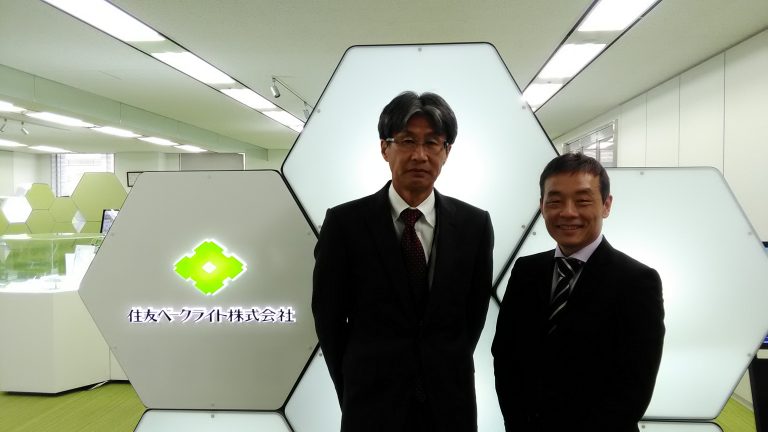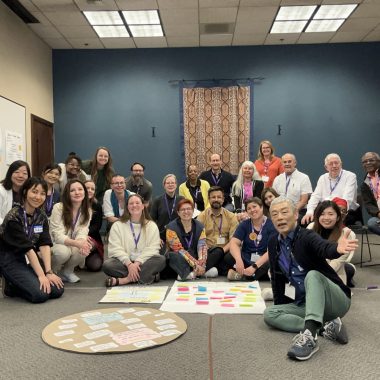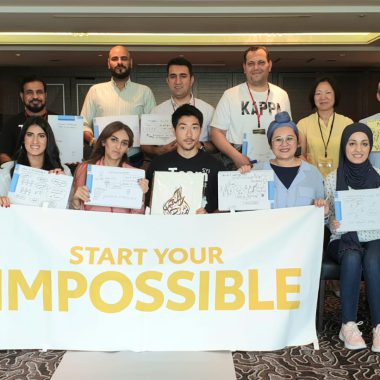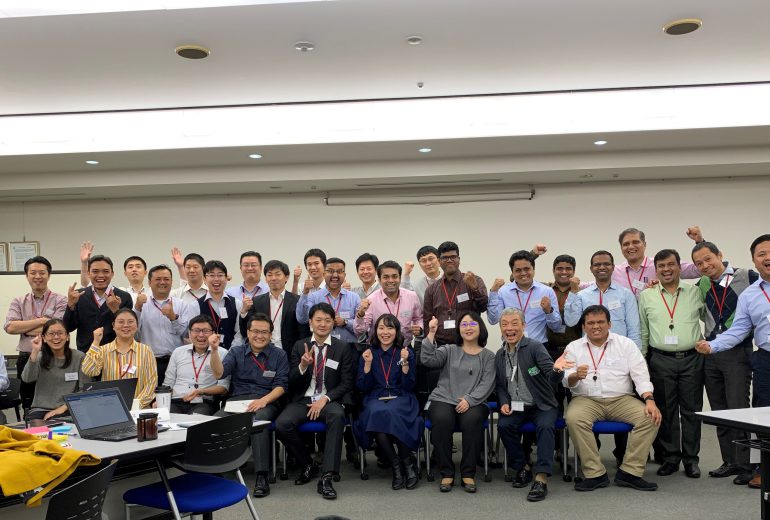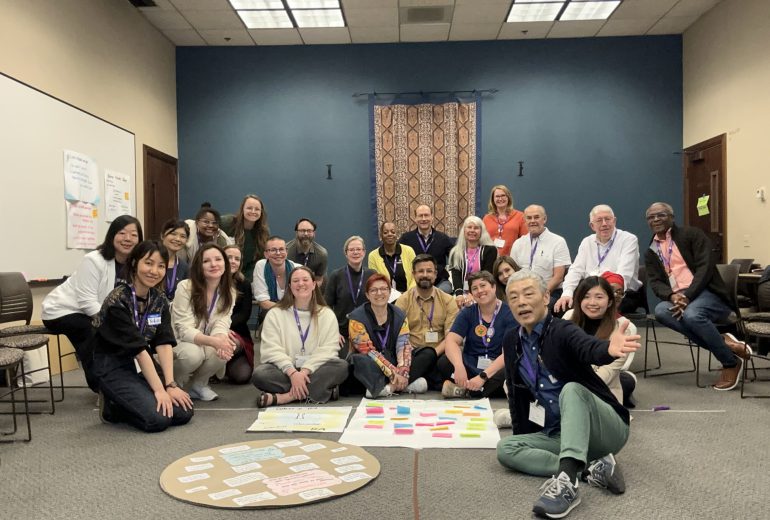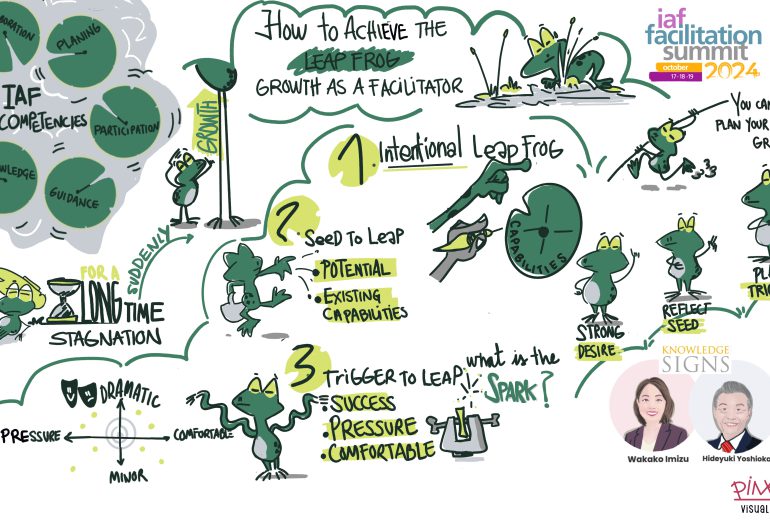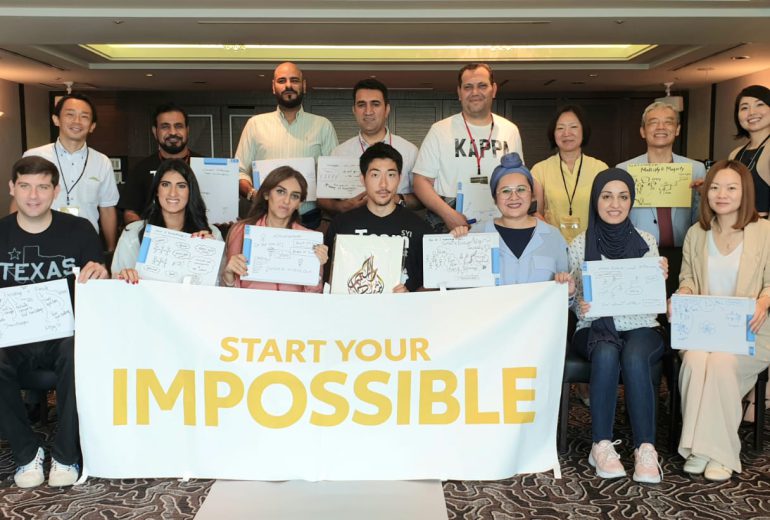This post is also written in the following language:
![]() 日本語 (Japanese)
日本語 (Japanese)
Discussions on change involving young next-generation leaders
Knowledge Sign has helped various organizations transform their mission, organizational competencies, mindset.
We introduce the transformation of the IT department of Sumitomo Bakelite Corporation, which Knowledge Sign assisted, in detail, including an interview with Mr. Shiro Hayashi, General Manager of the Information Systems Department.
In recent years, especially with the digitalization of business, the IT department has been told that its role should be shifted to more business value enhancement, such as launching a new digital business.
The shift is from a “Passive IT” role, where the IT department is to provide IT with superior QCD, to an “Active IT” role, where the IT department is more proactive in making proposals and providing IT that can reform business processes and bring competitive advantages to the business. Many IT departments in Japanese companies are still facing these challenges.
In order for IT departments to transform their roles and meet these expectations, they need to
‣Define how the IT department will change and what the transformation will look like.
‣Draw up an action plan to achieve this vision
‣Implement the plan with strong leadership.
‣Promptly take agile action in response to changes in the environment and the degree of progress in implementation.
Knowledge Sign provides facilitation services for the top managements of IT department and executives to help them materialize, implement, and monitor the above plans.
At Sumitomo Bakelite, a total of eight facilitation sessions were held over a two-month period starting in April 2014 for six Transformation Committee members, consisting of the IT department head and young leaders, to identify 10 activities and determine specific measures for the future transformation of the IT department role.
From that point on, the transformation plan has been steadily implemented every year and has produced results.
Interview
Client: Sumitomo Bakelite Co.
Facilitation period: April – May 2014
Number of workshops: 8
Participants: IT department managers, section managers, and young leaders (6 participants in total)
Objective: Clarify the goal of IT department over the next five years and what will be addressed to achieve it. Decide specific action plans to reform organizational structure and enhance organizational competencies.
Interviewee: Mr. Shiro Hayashi, General Manager of Information Systems Department, Sumitomo Bakelite K.K. and Director, Sumibe Information Systems Co.
Interviewer: Hideyuki Yoshioka, Organizational Transformation Facilitator, Knowledge Sign, Inc.
– First of all, please tell us about the background behind your decision to formulate an IT department transformation plan.
Mr. Hayashi: Our IT subsidiary, Sumibe Information Systems, has about 80 employees and in effect, those 80 employees are the IT department of Sumitomo Bakelite. About half of IT department staff is placed in major plants in Japan, and each plant has its own IT budget. So plants have a initiative to implement IT system on their own.
Although the IT department is working with the line of business and take an initiative to standardize the infrastructure, security, and applications used throughout the company, many of the systems have been independently developed.
We began working with Mr. Yoshioka in 2014, just as we were trying to switch from mainframe to open systems as a top priority over the next several years, and were beginning to identify the work that needed to be done and to think in concrete terms about reforming IT organization and its role in the next generation after the transition was completed.
– In fact, prior to the full-scale facilitation, we had discussed such a vision and confirmed that the issues to be addressed toward the desired vision. Therefore, although there was an option to proceed with the practical planning by two of us alone, we dared to involve the younger leaders and took our time in facilitating the process.
Mr. Hayashi: The commitment of the next generation is essential in implementing change. I wanted to involve them in the action of the transformation by thinking together with them, not just by pulling them along by myself.
Three of the six members involved in this project were relatively young, and I am sure they wondered why they were chosen for such an important role. However, looking at their growth since then, I am convinced that it was a success to involve them in the project.
The actual facilitation went thorough of eight 3-hour workshops over two months. As shown below, the eight workshops were divided into three major phases: “Confirmation of the desired vision and key issues,” “Conversion of key issues into activities,” and “Planning of action plans for each activity.”

Steps of Organizational Transformation Workshop
Clarify the intent of what we want to do, how we want to be
In many cases, the first step in facilitating organizational change is to clearly define the vision, mission, and value of the organization.
However, in this facilitation, we dared to make the clarification of vision, mission, and values the last step.
This is because, based on my experience in organizational transformation in the IT department, when we try to decide the description of vision, mission, they’re likely to be just tokens. Those beautiful words do not necessarily reflect what we really want to do and how we really want to be.
So, as the first step. I’ve made the team think about following stuffs.
‣What I am able to manage and comfortable with in our mission
‣What I am unable to manage and uncomfortable with in our mission
“What we are unable and uncomfortable with” implies the gap between the current status and the desired status. When we think about the desired status first, it sometimes could be far from what we really want to achieve.
As Japanese employees are generally diligent, we’re likely to think what we want to do as what we should do. In order to avoid such mischaracterizing, starting with thinking about unable thing could spontaneously surface the true desire.
After we reviewed the difference between able and unable, we were able to find what we really want to do. And we clarified it as rough statement at this point.
And we moved on to the next step, “What we need to do to achieve what we want to do.” And we broke down to the concrete activity items.

Mapping of issues to address
10 Activities for IT Organizational Transformation
In Phase 1 of the eight-session workshop, we identified the vision and issues to be addressed in order to realize the vision.
In Phase 2, we clarified specific activities to be undertaken in order to achieve the transformation. By mapping the issues, we classified the issues in six categories, including “standardization/governance,” “human resource development/motivation,” “IT implementation plan/experience design,” etc., and a total of 10 activities were set.

10 Activities
Act1. Establish a review mechanism/review system for IT projects
Act2. Decide IT quality standards
Act3. Implement a system to praise project results
Act4. Plan internal communication from the IT department
Act5. Encourage external exchanges
Act6. Support career planning
Act7. Decide IT implementation plan and engineer assignment plan for each project
Act8. Specify measures for job rotation
Act9. Plan next generation leader development
Act10. Plan business process efficiency to create more time
These are interrelated activities, and the core activities are
Act1. Establish a review mechanism/review system for IT projects
Act2. Decide IT quality standards
Debrief how we grew by the project at the post-implementation evaluation.
Post-implementation evaluation is also important. It is easy to think that the goals of the system development have been achieved once the system has been successfully cut over and is operating stably, but we must properly evaluate how the system impacts our business.
We debrief the system implementation from the two perspectives of
-How end users evaluate?
-What did we learn through the project?
Therefore, we decided to hold a event to share the achievement of the project. Once a quarter, we look back at the main projects we have been involved in and share what challenges we faced, how we overcame them with our originality and ingenuity, and what we learned from them.
Then, awards are given to outstanding projects which made us grow the most on a team-by-team basis.
As an activity for internal communication from the IT department, we publish a bimonthly IT news magazine and distribute it to the business divisions. The purpose of this is to increase the presence of the IT department and to increase business divisions’ interest in IT. It has been pointed out lack of presence of IT department.
It attempts to provide useful information from the user’s perspective, rather than merely introducing the IT department’s operations, such as quick reference of newly implemented business systems, the latest IT trends, and tutorials of new IT devices.
This news magazine is distributed bimonthly as an electronic media, and the editor’s role is rotated among the IT department staff. The topic is decided in consultation with the IT department manager, and the editing of the content is left to the staffer in charge. Through the editing of the news magazine, we are trying to have them learn how to communicate to the business divisions.
Managers must recognize learning and development support is the most important role.
Human resource development in the IT department is basically based on project experience.
Sumitomo Bakelite has two major types of career path for IT staff, Technical experts and Project leaders, and designs a skill development plan based on project experience to determine what kind of projects to develop them through.
The projects are categorized in 4 quadrants, “business process reform” and “infrastructure development” in terms of system objectives, and in terms of skills development, “technical expert development” and “project leader development,”
How to assign IT staff in a certain project is decided based on skills development plan for each staffer regarding which quadrant is more appropriate.
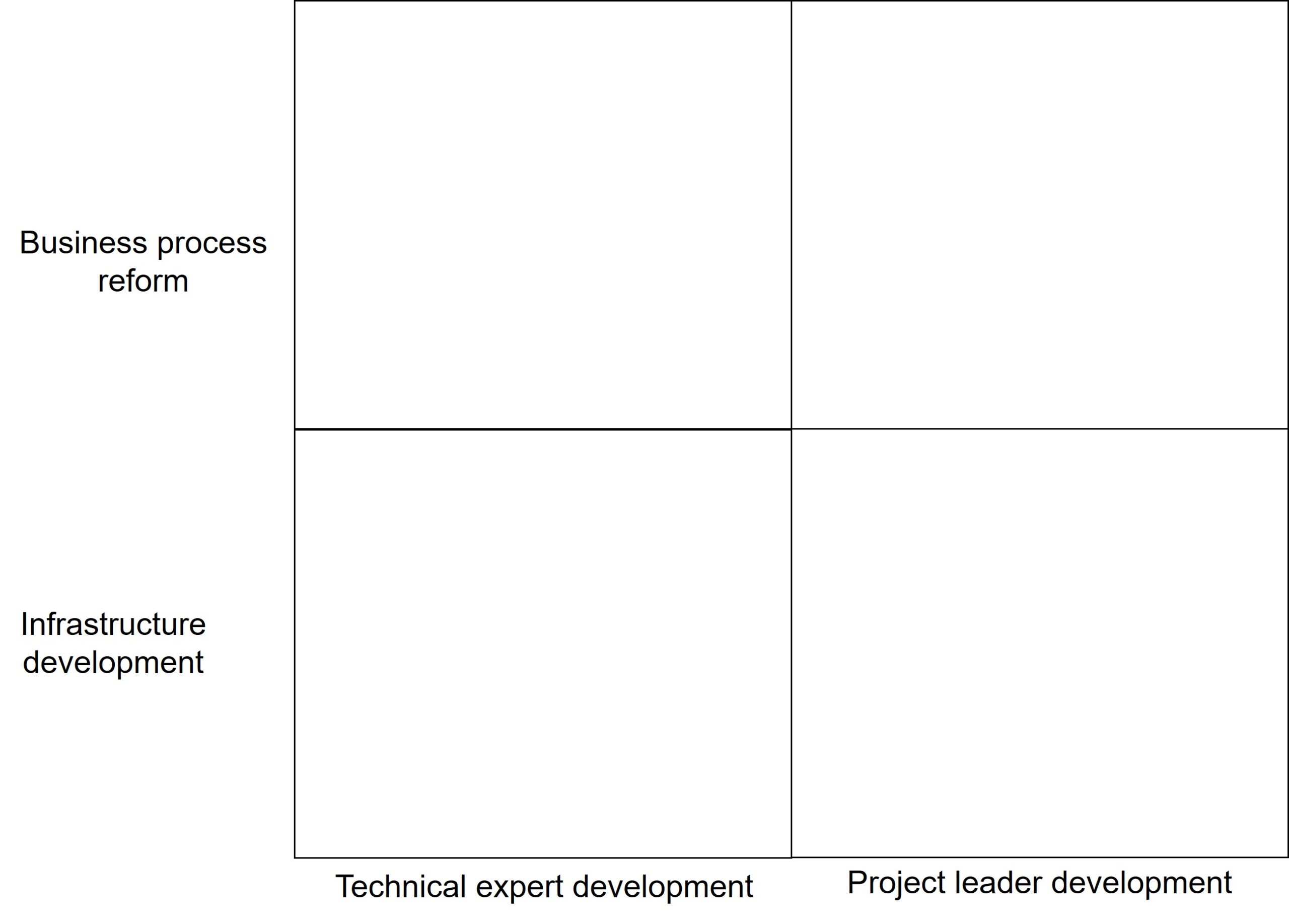
Matrix for Project Assign
Based on this idea, the manager’s role is to come up with a skills development plan for each individual. This is true for the entire IT department of a company, but there are not many cases where managers are properly committed to the skill development of young employees.
Sumitomo Bakelite mandates the managers to conduct one-on-one meeting with subordinates with a strong awareness of the responsibility for the skills development planning.
Because of company-wide IT development priorities, it is actually difficult to assign personnel as per the project assignment plan. However, now that a base for sharing and discussing the skills development plan between supervisors and subordinates has been established, it has become possible for young personnel to contemplate their own careers.

